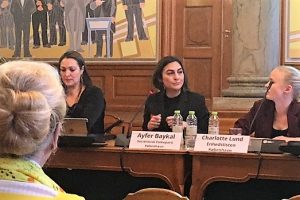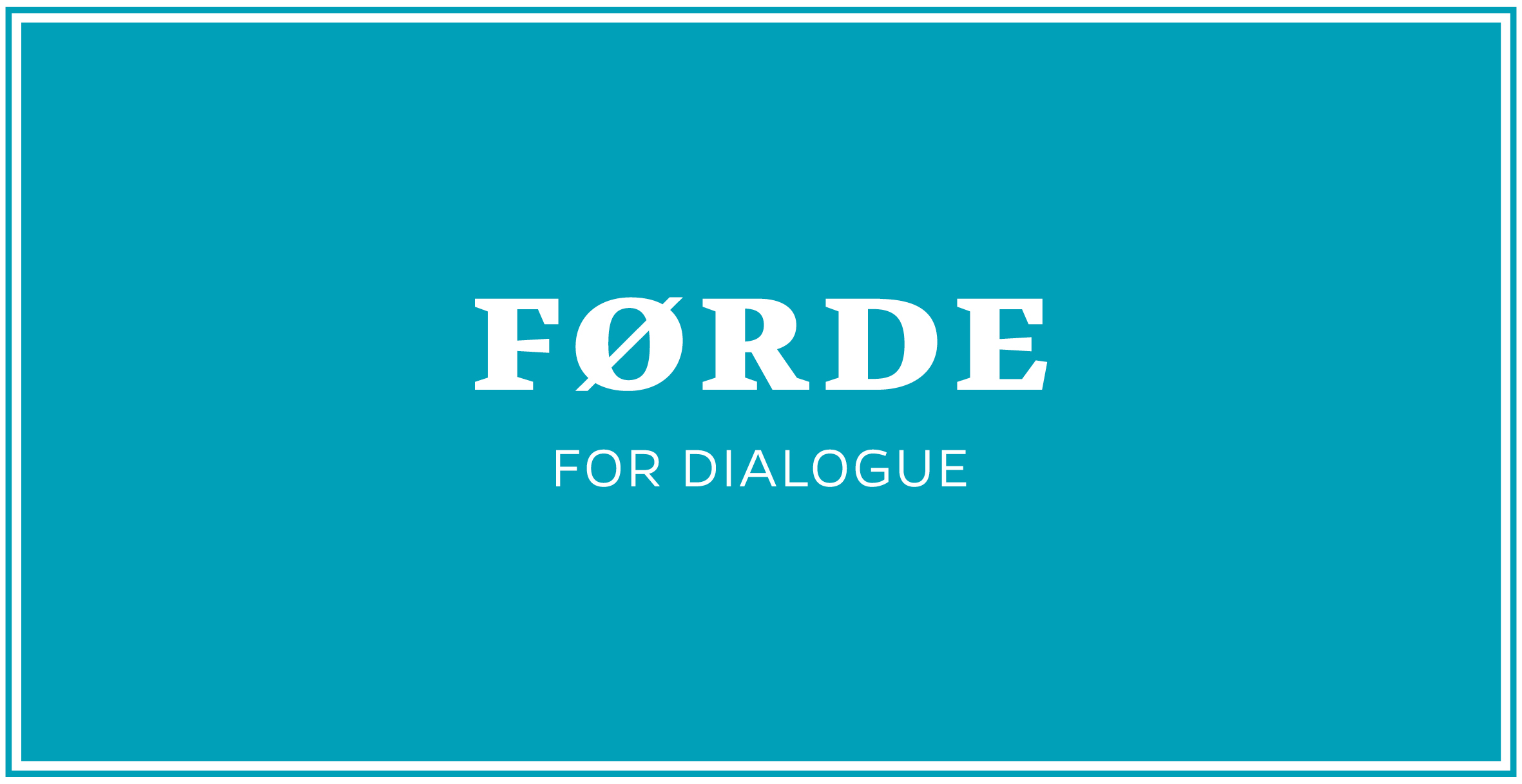
KV17 – STORY # 3 – WOMEN IN POLITICS
IN DANISH, KV17 IS SHORT FOR MUNICIPAL ELECTIONS 2017. ON 21 NOVEMBER, DANISH VOTERS WILL DECIDE THE POLITICAL COMPOSITION OF 98 MUNICIPAL COUNCILS AND 5 REGIONAL COUNCILS. THIS TAKES PLACE EVERY FOUR YEARS, AND ALWAYS ON THE THIRD TUESDAY IN NOVEMBER. THIS IS CAST IN STONE AND DIFFERS FROM ELECTIONS FOR PARLIAMENT, WHICH CAN BE CALLED BY THE PRIME MINISTER WITHIN THE PERIOD OF MAXIMUM FOUR YEARS. DURING THE ELECTION CAMPAIGN, I WILL POST A SERIES OF STORIES ABOUT SMALL AND LARGE ISSUES THAT DEFINE THE SPECIAL ‘DEMOCRATIC CULTURE’ OF MUNICIPAL ELECTIONS IN DENMARK.
STORY # 3
THE never ending ISSUE OF WOMEN IN POLITICS – BLA, BLA, BLA

Panel of municipal councilors speaking about their own experiences at the seminar on 25 October 2017.
While women make up a small majority of the population of Denmark, as well as of the electorate, they only sit on slightly less than 40 percent of the 179 seats of Parliament, and only 30 percent plus of the more than 2.000 municipal councilors elected in 98 councils. This was the point of departure for a seminar hosted by KVINFO [the key institution working with gender equality and women’s issues in Denmark], in cooperation with some of the political parties, and therefore taking place in Parliament. Is municipal politics only for middle aged men? was the provocative title coined for the seminar [and I guess I belong to that group of humanity!]. First, experts delivered an analysis of different perspectives, and then women councilors discussed their experiences and tried to indicate what could be done about the situation.
The issue of gender equality and women in politics has been close to my heart for many years, and most recently, during my years as Director of the Danish Institute for Parties and Democracy, it was one of the key focus areas. Not only is gender inequality a visible expression of the inability of our highly developed society to actually treat all citizens in the same manner, irrespective of sex, ethnicity, color, race, and religion. The gap in participation between men and women in the political arena is an equally visible expression of the road we still have to travel before we have a full democracy. So I was happy to join women [clearly in the majority] and other men [there were a few of us] to once again listen to the basic statistics and the reasons we seem to be unable to achieve equality in this area, despite efforts over a period of more than 100 years.
I will not bore you with all the details of the statistics. In fact, the picture is fairly simple: After we had a new Constitution in 1915, allowing women to vote, it took us several decades to reach a 10 percent representation of women. It then took another several decades to jump to the one third level of around 30 percent female representation. However, for the last 30 years, we have seen nothing but stagnation. The fact that for this municipal election, we have seen a record high of 31,8 percent women standing as candidates is no reason for celebration. After all, Denmark is doing worse than our Nordic friends in Finland, Iceland, Sweden and Norway.
Talking to male politicians in political parties in recent years, I have generally sensed a lack of interest in doing anything serious about this. Sure, they will agree that it is unfortunate! Oh yes, when asked, they wil state that of course we should do better! But the reality is that the majority of male politicians fail to see the now seemingly permanent male-female gap as a major democratic problem. Many of the women politicians I have had the privilege to work with are passionate about changing the status quo, but true to the Danish tradition, they are against any quota system that could make a difference.
So what do we do, when the development in our neighboring Nordic countries indicate that it is actually possible to do better? What do we do, when we have talked about the things we need to change in seminar after seminar, year after year? Do we continue to talk and listen to bla, bla, bla, as one of the experts said? Or do we try something new, and do something that the political parties can feel and therefore might do something to change things? Yes, I think we need to do something which is outside the normal comfort zone of Danish politics. If we don’t, we might as well forget about any change.
My proposal is rather simple – but not simplistic. It is linked to the fact that most [if not all] Danish political parties would find it difficult to run their party structures without the rather substantive state support they receive, based on the number of votes cast for the party. Membership fees only make up a small part of the party finances. Today, there are no ‘conditions’ linked to the support given. In the future, I propose a gender equality conditionality. If a party presents a list of candidates with a 50-50 ratio of male-to-female candidates, the party will receive 100 percent of state funding. If a party presents a 60-40 gender ratio in favor of men, only 90 percent of funding will be paid. If the ratio is 70-30, then the state funding is reduced to 80 percent. This means that there is now a ‘whip and carrot’ incentive structure built into the system – very similar to the whips and carrots recent governments have been happy to introduce in our social welfare system to activate the unemployed, the immigrants, etc.
Such a system could be implemented overnight, and it would undoubtedly move Denmark in the right direction. Of course, the new system offers no guarantee for a gender balanced political system. It only ensures that parties present a balanced and democratic list of candidates. Voters may then reject the idea of a balanced and democratic representation. But why would they do that in a highly developed and sophisticated society like Denmark? Today, our experience is that if women make up 31 percent of candidates, we get very close to 30 percent women represented. Consequently, if parties present 50 percent women on their lists, then we will most likely get close to 50 percent women’s representation.
Parties will argue that they cannot find enough women to stand as candidates – because it is too much work to be in a municipal council, meetings take place at inconvenient times, and many other good arguments or excuses. I will write about all of this in a later story. However, then we must get to work on these issues, and I am sure we can find solutions. If Iceland can – why not Denmark?
